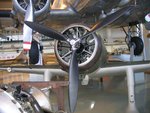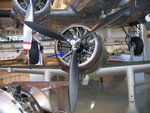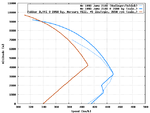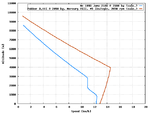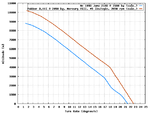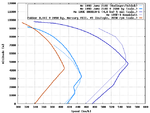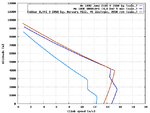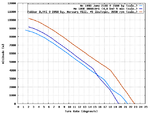Navigation
Install the app
How to install the app on iOS
Follow along with the video below to see how to install our site as a web app on your home screen.
Note: This feature may not be available in some browsers.
More options
You are using an out of date browser. It may not display this or other websites correctly.
You should upgrade or use an alternative browser.
You should upgrade or use an alternative browser.
Fokker D.XXI in Dutch service
- Thread starter Marcel
- Start date
Ad: This forum contains affiliate links to products on Amazon and eBay. More information in Terms and rules
More options
Who Replied?- Thread starter
- #22
Airframes
Benevolens Magister
Marcel (and Juha), thank you for a very informative insight into the FokkerXXI.
It's an aircraft that I knew little about but, ever since I built an original 'Frog' model of one when I was a child, it has held my interest. There is just 'something' about it that looks right; and I wonder what it could have been like if developed (Retractable undercarriage, in-line engine etc.)?
It's an aircraft that I knew little about but, ever since I built an original 'Frog' model of one when I was a child, it has held my interest. There is just 'something' about it that looks right; and I wonder what it could have been like if developed (Retractable undercarriage, in-line engine etc.)?
- Thread starter
- #25
Marcel (and Juha), thank you for a very informative insight into the FokkerXXI.
It's an aircraft that I knew little about but, ever since I built an original 'Frog' model of one when I was a child, it has held my interest. There is just 'something' about it that looks right; and I wonder what it could have been like if developed (Retractable undercarriage, in-line engine etc.)?
My pleasure Airframes and I'm not finished jet. About your question,I believe it would have been comparable to the British Hawker Hurricane, if the armament would have been upgraded as well. But maybe it would have brought some disadvantages as well. I believe the strength of this aircraft was it's simple construction, easy to repair and it's ability of flying from small airfields. This was a main advantage of the a/c in the 5 days war, as 4 of the 5 days were kinda like a guerilla airwar, with hidden airfields and quick hit-and-run attacks.
Hi Marcel,
>This thread is meant to cover the story of the D.XXI, while focussed on the service in The Netherlands. (I will probably bore the hell out of you
Actually, I find it quite interesting! I'd like to try to analyse D.XXI performance and have been looking for numbers, but so far, I haven't found the "full set" of figures I'd need.
I'd like to try to analyse D.XXI performance and have been looking for numbers, but so far, I haven't found the "full set" of figures I'd need.
Perhaps you have some information on:
Weight in fighter configuration
Top speed at full throttle height (with top-speed full throttle height)
Engine power at sea level and full throttle height (with full throttle height under static conditions) - I assume the powerplant is a single-speed, single stage engine?
Wing span, wing area
Exhaust system: Collector ring with no backward exhaust, collector with backward exhaust, single ejector stubs?
Propeller: Fixed pitch or variable pitch/constant speed?
Clmax of the wing, or the designation of the wing section that was used
That would allow a fairly good comparison to contemporary types, such as the Me 109D that the Fokker might have met in combat.
Regards,
Henning (HoHun)
>This thread is meant to cover the story of the D.XXI, while focussed on the service in The Netherlands. (I will probably bore the hell out of you
Actually, I find it quite interesting!
Perhaps you have some information on:
Weight in fighter configuration
Top speed at full throttle height (with top-speed full throttle height)
Engine power at sea level and full throttle height (with full throttle height under static conditions) - I assume the powerplant is a single-speed, single stage engine?
Wing span, wing area
Exhaust system: Collector ring with no backward exhaust, collector with backward exhaust, single ejector stubs?
Propeller: Fixed pitch or variable pitch/constant speed?
Clmax of the wing, or the designation of the wing section that was used
That would allow a fairly good comparison to contemporary types, such as the Me 109D that the Fokker might have met in combat.
Regards,
Henning (HoHun)
- Thread starter
- #27
Hi Hohun,
What I know:
Weight: Empty: 1450 kg, full load: 2050kg
Top speed: 460 km/h at 5100 m (at 2750 rpm engine), with full miliary load: 415 km/h.
Propellor: Ratier 2 speed propellor
Engine: Bristol Mercury VIII, Power at start, 2650 rpm: 705-735 hp, full trottle at 4270m: 850 hp, climbing at 2650 rpm at 3965m: 805-835
Single speed etc.: no idea you should ask the real engine buffs
Wingspan: 11.00m
Wing area: 16.2m^2
Clmax, sorry don't know.
What I know:
Weight: Empty: 1450 kg, full load: 2050kg
Top speed: 460 km/h at 5100 m (at 2750 rpm engine), with full miliary load: 415 km/h.
Propellor: Ratier 2 speed propellor
Engine: Bristol Mercury VIII, Power at start, 2650 rpm: 705-735 hp, full trottle at 4270m: 850 hp, climbing at 2650 rpm at 3965m: 805-835
Single speed etc.: no idea you should ask the real engine buffs
Wingspan: 11.00m
Wing area: 16.2m^2
Clmax, sorry don't know.
kool kitty89
Senior Master Sergeant
Juha, what's your sourse for the performance figures?
They do seem to match those here: Fokker D.XXIs to Finland
(which makes sense as these should be from Finnish records)
The speed does seem a bit lower than the Dutch figures (with Mercury VIII) but maybe the Mercury VII was less powerful.
Or the comparisons are in different loading conditions or at different engine power -the 460 km/h figure being at take-off/emergency power.
(as the top speed with the Mercury in the Finnish figures seems to match the Dutch figures at "full combat weight" at 414 km/h)
They do seem to match those here: Fokker D.XXIs to Finland
(which makes sense as these should be from Finnish records)
The speed does seem a bit lower than the Dutch figures (with Mercury VIII) but maybe the Mercury VII was less powerful.
Or the comparisons are in different loading conditions or at different engine power -the 460 km/h figure being at take-off/emergency power.
(as the top speed with the Mercury in the Finnish figures seems to match the Dutch figures at "full combat weight" at 414 km/h)
kool kitty89
Senior Master Sergeant
Also, has anyone else heard of this:
From http://www.ww2aircraft.net/forum/ai...r-d-xxi-retractable-under-carriage-13219.html
From http://www.ww2aircraft.net/forum/ai...r-d-xxi-retractable-under-carriage-13219.html
On the other hand all Finnish Fokkers were modified to have wing slots as in 109. The speed loss was like 0-5 km/h
but the new wing was more agile and had better landing characteristics.
Martti
Hello KK
sources: Kalevi Keskinen, Kari Stenman and Klaus Niska: Suomen Ilmavoimien Historia 3 Fokker D.XXI
Timo Heinonen:Thulinista Hornetiin (1992)
and for cannon-Fokker Pentti Manninen: FR-76 "Tykki-Fokkeri" in Suomen Ilmailuhistoriallinen Lehti 3/1995
and for general info and for details Jukka Raunio: Lentäjän näkökulma II (1993)
Now from Aug 1941 onwards slots were built in wings of D.XXIs, both to the new ones and to old ones when they went to factory for repairs. So slots like in SBD (IIRC) and not slats as in Bf 109 and in Yaks, LaGGs and Las.
Juha
sources: Kalevi Keskinen, Kari Stenman and Klaus Niska: Suomen Ilmavoimien Historia 3 Fokker D.XXI
Timo Heinonen:Thulinista Hornetiin (1992)
and for cannon-Fokker Pentti Manninen: FR-76 "Tykki-Fokkeri" in Suomen Ilmailuhistoriallinen Lehti 3/1995
and for general info and for details Jukka Raunio: Lentäjän näkökulma II (1993)
Now from Aug 1941 onwards slots were built in wings of D.XXIs, both to the new ones and to old ones when they went to factory for repairs. So slots like in SBD (IIRC) and not slats as in Bf 109 and in Yaks, LaGGs and Las.
Juha
kool kitty89
Senior Master Sergeant
Thanks for the info. The addition of the slots should have cured thoes tip-stalling problems you mentioned a while back.
Slats is the correct term for the automatic devices, but in this timeframe they were often referred to as "automatic slots." (in fact I believe this was the terminology used by Handley Page when they developed, patented, and maketed them)
Slats is the correct term for the automatic devices, but in this timeframe they were often referred to as "automatic slots." (in fact I believe this was the terminology used by Handley Page when they developed, patented, and maketed them)
Hi Marcel,
>What I know:
Thanks for the data!
>Top speed: 460 km/h at 5100 m (at 2750 rpm engine), with full miliary load: 415 km/h.
Hm, a bit too much of a difference between these two ... could it be "full military equipment" instead of "... load"? Then 460 km/h would be the "prototype speed". 5.1 km full throttle height is very much, too - it indicates 100% exploitation of the ram effect, which is not normally achieved in practice.
>Propellor: Ratier 2 speed propellor
I'll assume it's a constant speed propeller because this is all I can handle
>Engine: Bristol Mercury VIII, Power at start, 2650 rpm: 705-735 hp, full trottle at 4270m: 850 hp, climbing at 2650 rpm at 3965m: 805-835
A bit confusing ... I take it the data for 4270 m is for 2750 rpm, so I'll use the lower full throttle height for 2650 rpm.
>Clmax, sorry don't know.
Based on Juha's suggestion of the profile, I'll arbitrarily assign a 1.35 clmax because it's in the ballpark.
I've got to re-run the figures later because of the difficulties with the data I pointed out above, but it sure looks like the Fokker D.XXI could both out-climb and out-turn the Me 109D easily, but it had a big speed disadvantage.
Regards,
Henning (HoHun)
>What I know:
Thanks for the data!
>Top speed: 460 km/h at 5100 m (at 2750 rpm engine), with full miliary load: 415 km/h.
Hm, a bit too much of a difference between these two ... could it be "full military equipment" instead of "... load"? Then 460 km/h would be the "prototype speed". 5.1 km full throttle height is very much, too - it indicates 100% exploitation of the ram effect, which is not normally achieved in practice.
>Propellor: Ratier 2 speed propellor
I'll assume it's a constant speed propeller because this is all I can handle
>Engine: Bristol Mercury VIII, Power at start, 2650 rpm: 705-735 hp, full trottle at 4270m: 850 hp, climbing at 2650 rpm at 3965m: 805-835
A bit confusing ... I take it the data for 4270 m is for 2750 rpm, so I'll use the lower full throttle height for 2650 rpm.
>Clmax, sorry don't know.
Based on Juha's suggestion of the profile, I'll arbitrarily assign a 1.35 clmax because it's in the ballpark.
I've got to re-run the figures later because of the difficulties with the data I pointed out above, but it sure looks like the Fokker D.XXI could both out-climb and out-turn the Me 109D easily, but it had a big speed disadvantage.
Regards,
Henning (HoHun)
- Thread starter
- #34
Correct, I translated it wrongly, sorry for thatHi Marcel,
>What I know:
Thanks for the data!
>Top speed: 460 km/h at 5100 m (at 2750 rpm engine), with full miliary load: 415 km/h.
Hm, a bit too much of a difference between these two ... could it be "full military equipment" instead of "... load"?
I got these figures from the Pilot's manual for the Mercury, see below.Then 460 km/h would be the "prototype speed". 5.1 km full throttle height is very much, too - it indicates 100% exploitation of the ram effect, which is not normally achieved in practice.
>Propellor: Ratier 2 speed propellor
I'll assume it's a constant speed propeller because this is all I can handle
>Engine: Bristol Mercury VIII, Power at start, 2650 rpm: 705-735 hp, full trottle at 4270m: 850 hp, climbing at 2650 rpm at 3965m: 805-835
A bit confusing ... I take it the data for 4270 m is for 2750 rpm, so I'll use the lower full throttle height for 2650 rpm.
That would fit with the comments of the pilots.>Clmax, sorry don't know.
Based on Juha's suggestion of the profile, I'll arbitrarily assign a 1.35 clmax because it's in the ballpark.
I've got to re-run the figures later because of the difficulties with the data I pointed out above, but it sure looks like the Fokker D.XXI could both out-climb and out-turn the Me 109D easily, but it had a big speed disadvantage.
Regards,
Henning (HoHun)
Attachments
Hi Marcel,
>I got these figures from the Pilot's manual for the Mercury, see below.
Ah, thanks - that clears it up a bit. Interesting that 4270 m (14000 ft) is considered full throttle height at top speed, while the Wikipedia article quotes it as if it were static full throttle height, but I'll go with the manual on this.
Bristol Mercury - Wikipedia, the free encyclopedia
Is my propeller diameter of 2.84 m correct? I'm also using a reduction gear ratio of 0.572:1.
I have assigned a ram efficiency factor of 0.5 and selected a static full throttle height to achieve that at my calculated best climb speed at the altitude indicated in the manual.
Below the first results ...
Regards,
Henning (HoHun)
>I got these figures from the Pilot's manual for the Mercury, see below.
Ah, thanks - that clears it up a bit. Interesting that 4270 m (14000 ft) is considered full throttle height at top speed, while the Wikipedia article quotes it as if it were static full throttle height, but I'll go with the manual on this.
Bristol Mercury - Wikipedia, the free encyclopedia
Is my propeller diameter of 2.84 m correct? I'm also using a reduction gear ratio of 0.572:1.
I have assigned a ram efficiency factor of 0.5 and selected a static full throttle height to achieve that at my calculated best climb speed at the altitude indicated in the manual.
Below the first results ...
Regards,
Henning (HoHun)
Attachments
- Thread starter
- #36
An example of an incident during the neutrality period, the incident with the Fokker T.VIIIw (R-5).
On Wednesday, 09/13/1939, Fokker VIIIw (R-5) of the Royal Dutch Navy was on patrol a few miles north of Ameland, when the crew spotted a plane. After following it for a while, the R-5 came closer in order to identify the nationality and the type of the unknown plane. It was the He115 M2+LH (1./106) on a reconnaissance flight over the North sea. As soon as the crew of R-5 identified it, they turned away to fly back to Ameland. The German crew however mistook the Dutch roundel for English markings and opened fire. The R-5, damaged badly, made a crash landing on the heavy sea. The He115 landed beside the crashed aircraft to rescue the crew. Then they found out their mistake. The He115 however was damaged by the heavy sea and was unable to take off. Do18 M2+LK (2./106) came for the rescue. But again, the landing went wrong and the Do18 fuselage started leaking, after which, it started floating towards the coast. In the meantime, the He115 was able to take off again and head for Germany.
3 D.XXI's from 1e JaVA (1-II-1 LvR) at Eelde airport arrived at the scene and saw the Do18 trying to get to international waters again. The leading D.XXI gave a warning shot in front of the bow and the DO18 turned back to the coast. When the D.XXI left, the Do18 turned back to the north, after which the D.XXI's attacked again, wounding 1 german crewmember. The Do18 gave up and floated to the beach of Ameland. In the following hours the D.XXI fighters had to deter several German planes trying to violate the Dutch airspace to rescue the Do18.
The incident caused the Dutch to change from the roundel markings on their aircraft to the orange triangles.
Parts of the Do18 were still found on the beach in 1984.
Pics:
1. Do18 on the beach
2. T.VIIIw (R-5) with Dutch roundel
3. Fokker D.XXI with orange triangle
On Wednesday, 09/13/1939, Fokker VIIIw (R-5) of the Royal Dutch Navy was on patrol a few miles north of Ameland, when the crew spotted a plane. After following it for a while, the R-5 came closer in order to identify the nationality and the type of the unknown plane. It was the He115 M2+LH (1./106) on a reconnaissance flight over the North sea. As soon as the crew of R-5 identified it, they turned away to fly back to Ameland. The German crew however mistook the Dutch roundel for English markings and opened fire. The R-5, damaged badly, made a crash landing on the heavy sea. The He115 landed beside the crashed aircraft to rescue the crew. Then they found out their mistake. The He115 however was damaged by the heavy sea and was unable to take off. Do18 M2+LK (2./106) came for the rescue. But again, the landing went wrong and the Do18 fuselage started leaking, after which, it started floating towards the coast. In the meantime, the He115 was able to take off again and head for Germany.
3 D.XXI's from 1e JaVA (1-II-1 LvR) at Eelde airport arrived at the scene and saw the Do18 trying to get to international waters again. The leading D.XXI gave a warning shot in front of the bow and the DO18 turned back to the coast. When the D.XXI left, the Do18 turned back to the north, after which the D.XXI's attacked again, wounding 1 german crewmember. The Do18 gave up and floated to the beach of Ameland. In the following hours the D.XXI fighters had to deter several German planes trying to violate the Dutch airspace to rescue the Do18.
The incident caused the Dutch to change from the roundel markings on their aircraft to the orange triangles.
Parts of the Do18 were still found on the beach in 1984.
Pics:
1. Do18 on the beach
2. T.VIIIw (R-5) with Dutch roundel
3. Fokker D.XXI with orange triangle
Attachments
- Thread starter
- #37
Is my propeller diameter of 2.84 m correct? I'm also using a reduction gear ratio of 0.572:1.
I have assigned a ram efficiency factor of 0.5 and selected a static full throttle height to achieve that at my calculated best climb speed at the altitude indicated in the manual.
Below the first results ...
Regards,
Henning (HoHun)
Hi Henning,
Thanks , interesting data
Am I right that the second graph is climbspeed?
And a request, could you include the Bf109E and/or Bf110C as well? The D.XXI had a number of encounters with the types.
Hi Marcel,
>And a request, could you include the Bf109E and/or Bf110C as well? The D.XXI had a number of encounters with the types.
Here is the data for the Me 109E. (Note that I'm experimenting with different high-altitude power estimating methods for better comparability with the sketchy data on the Mercury - absolute figures at high altitude might not be exact as a result).
I have recalculated the D.XXI in the new set for the larger propeller diameter you quoted.
Regards,
Henning (HoHun)
>And a request, could you include the Bf109E and/or Bf110C as well? The D.XXI had a number of encounters with the types.
Here is the data for the Me 109E. (Note that I'm experimenting with different high-altitude power estimating methods for better comparability with the sketchy data on the Mercury - absolute figures at high altitude might not be exact as a result).
I have recalculated the D.XXI in the new set for the larger propeller diameter you quoted.
Regards,
Henning (HoHun)
Attachments
- Thread starter
- #40
Hi Marcel,
Here is the data for the Me 109E. (Note that I'm experimenting with different high-altitude power estimating methods for better comparability with the sketchy data on the Mercury - absolute figures at high altitude might not be exact as a result).
Regards,
Henning (HoHun)
No problem, most of the fighting was at the lower altitudes anyway.
Great info, thanks, seems to confirm the reports of Dutch pilots that they usually could outturn the Bf109. The speed disadvantage is of course obvious.
Users who are viewing this thread
Total: 1 (members: 0, guests: 1)

